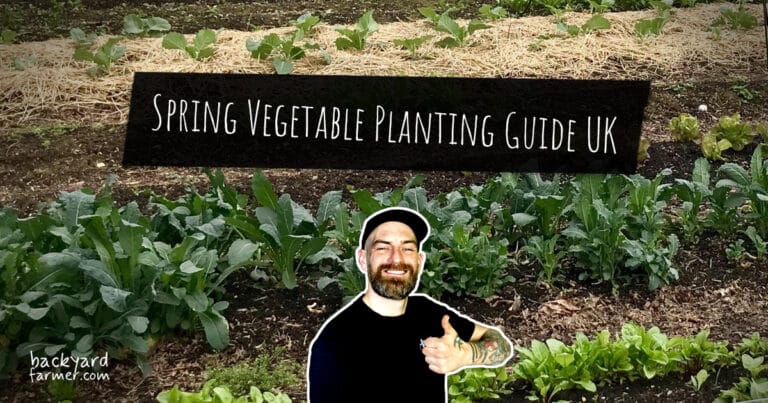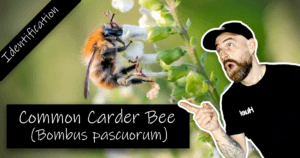Introduction
Spring is the busiest season for UK growers—and for good reason. After months of short days and soggy weather, the soil finally warms, the light levels increase, and the vegetable planting calendar UK suddenly feels wide open. Whether you’re tending a full allotment or a few raised beds at home, spring is the moment to set the stage for your most productive harvests.
However, a good spring planting guide UK isn’t just about enthusiasm—it’s about timing. Pay attention to your local frost dates, prepare the soil carefully, and choose the right spring vegetables for each month. By doing this, you’ll set yourself up for healthy growth and reliable harvests. With a little planning, you can enjoy fresh crops from March right through to summer.

Check the Biodynamic Planting Calendar
Plan the best days to sow, plant, and harvest with our free interactive Biodynamic Calendar. Covers both UK and US regions with root, leaf, flower, and fruit day guidance.
Preparing Your Plot for Spring Vegetables
A productive spring harvest starts with healthy soil. After months of winter rain and cold, beds can become compacted, waterlogged, or low in nutrients. Spending a little time now preparing your garden makes a big difference once you begin sowing your spring vegetables.
Clear and Tidy
Remove any leftover winter crops, weeds, or debris. Old plant material can harbour pests and diseases, so clearing it out early prevents problems later in the season. A clean bed also makes sowing easier and improves germination.
Improve the Soil
Spring is the perfect time to enrich your soil. Add well-rotted compost or manure and work it into the top layer, or spread it as mulch to boost structure, drainage, and fertility. If you’re working with heavy clay, extra organic matter will help prevent waterlogging and create a better seedbed for your vegetables.
Mulching and Warming
Give your crops a head start by warming the soil before planting. Use cloches, fleece, or polythene sheets a couple of weeks before sowing. This not only helps seeds germinate faster but also protects tender seedlings from unexpected cold snaps.
Check Your Frost Dates
Late frosts remain the biggest risk in early spring. Keep track of your local UK frost dates for planting and use them to guide when you sow or transplant tender crops. Hardy vegetables such as onions, peas, and spinach can be sown earlier, while beans, courgettes, and other tender plants are best left until the frost risk has passed.
Tip: Plan your growing season with our free Allotment Planner and Companion Planting Tips, the perfect tool to pair with your spring planting calendar.
What Vegetables to Sow in March UK
March marks the real start of the sowing season in the UK. While the weather can still bring the odd cold snap, there are plenty of hardy spring vegetables you can get underway. Think of this month as building the foundation for your summer harvests.
Indoors vs Outdoors
Some crops are best started under cover in March, while others can be sown straight into the soil:
- Indoors: Tomatoes, peppers, aubergines, and cucumbers thrive on a sunny windowsill, in a heated propagator, or inside a greenhouse.
- Outdoors: Hardy staples such as carrots, peas, lettuce, spinach, radishes, onions, and broad beans can be sown directly into prepared beds if the soil is workable.
Early Spring Staples
- Carrots: Sow early carrot varieties and protect them with cloches or fleece.
- Lettuce: Cut-and-come-again mixes provide fast, steady harvests all season.
- Onions & Shallots: Plant sets straight into the soil for reliable crops.
- Spinach: Cold-tolerant and quick to germinate, making it ideal for March sowings.
- Broad Beans: Perfect for early sowing, giving you a head start before pests arrive.
Tips for Success
- Warm the soil with cloches, fleece, or polytunnels to boost germination and protect seedlings from frost.
- Sow little and often to stagger harvests rather than planting everything at once.
- Keep an eye on slugs, which become more active as the weather warms up.
Did you know? Hardy crops like peas and onions can germinate in soil as cool as 5°C, making them a top choice for early spring planting UK.
Vegetables to Plant in April UK
April is one of the busiest—and most rewarding—months for sowing in the UK. By now, the soil has warmed, the days are longer, and the risk of frost is gradually easing. It’s the perfect moment to fill your beds and get a wide mix of spring vegetables started.
Indoors vs Outdoors
- Indoors: Tender crops such as tomatoes, chillies, courgettes, cucumbers, and sweetcorn should still be started under cover. They need warmth and protection until after the last frost.
- Outdoors: Hardy and half-hardy crops can now be sown directly. Popular choices include peas, beetroot, carrots, parsnips, lettuce, and brassicas such as cabbage, kale, and broccoli.
Key April Crops
- Potatoes: Plant second earlies and maincrop varieties in well-prepared soil.
- Beetroot: Sow in small batches every couple of weeks for regular harvests through summer.
- Brassicas: Start cabbages, kale, and Brussels sprouts for cropping later in the year.
- Peas & Beans: Sow maincrop peas and French beans outdoors, using cloches in colder areas.
- Spinach & Chard: Succession sow for a steady supply of cut-and-come-again greens.
Tips for Success
- Thin seedlings early to give each plant enough space and airflow.
- Protect young plants with fleece or cloches if a late frost threatens.
- Keep up with succession planting every few weeks to avoid gluts and extend harvests.
Tip: Always check your local last frost date before planting tender crops outdoors. In much of the UK, this falls in late April to early May, although colder regions may need to wait a little longer before moving tender vegetables outside.
What to Plant in May UK
By May, the gardening season is in full swing. The soil is warmer, the days are longer, and in many regions of the UK the last frost has passed. This is the month to plant out tender crops and see your spring vegetables beds burst into life.
Indoors vs Outdoors
- Indoors/Greenhouse: Continue raising cucumbers, melons, and chillies if you haven’t started earlier. These crops benefit from the warmth and longer daylight hours.
- Outdoors: Most vegetables can now be sown or transplanted, including runner beans, French beans, courgettes, sweetcorn, pumpkins, and tomatoes.
Key May Crops
- Runner Beans & French Beans: Sow directly into the soil once the risk of frost has passed.
- Sweetcorn: Plant in blocks rather than rows to improve pollination and achieve fuller cobs.
- Courgettes & Pumpkins: Either plant out seedlings or sow directly where they’ll grow.
- Tomatoes: Harden off plants and move them into a sunny, sheltered location.
- Salad Leaves & Radishes: Succession sow every couple of weeks to maintain a steady harvest.
Tips for Success
- Harden off tender seedlings gradually over 7–10 days before planting outdoors.
- Keep an eye on pests such as slugs and snails, which thrive in warmer, wetter conditions.
- Water consistently, especially for quick-growing crops like courgettes, radishes, and salads.
Did you know? Sweetcorn is wind-pollinated, so planting it in blocks ensures far better pollination than growing it in single rows—a handy trick for UK growers following a spring planting guide.
Succession Planting for Continuous Spring Harvests
One of the best ways to keep your garden productive is through succession planting. Instead of sowing everything at once, stagger your sowings so new crops are always coming through. This approach avoids gluts, reduces waste, and keeps your beds full of fresh spring vegetables for longer.
Why Succession Planting Works
- Steady supply: Provides ongoing harvests instead of one overwhelming glut.
- Efficient use of space: Replant beds as soon as a crop is cleared to keep them active.
- Healthier crops: Reduces pest and disease issues by spreading out planting times.
Best Vegetables for Succession Planting in Spring
- Salad Leaves: Sow every 2–3 weeks for a constant supply of fresh greens.
- Radishes: Mature quickly and are ideal for filling gaps between slower-growing crops.
- Spinach & Chard: Cut-and-come-again varieties keep producing when harvested regularly.
- Carrots & Beetroot: Sow smaller batches every few weeks to extend the season.
- Herbs: Coriander, dill, and parsley thrive with staggered sowings.
Tips for Success
- Plan ahead: Use a diary or digital planner to schedule sowings.
- Mix crop speeds: Pair quick growers like radishes with slower crops such as brassicas to make the most of space.
- Use planting tools: The Interactive Planting Calendar helps you check the best dates for succession planting in your area.
Tip: Always keep seedlings ready. As soon as you harvest a row of radishes or lettuce, replant immediately to keep your garden producing nonstop.
Common Mistakes to Avoid When Planting Spring Vegetables
Even experienced growers can make mistakes when it comes to spring planting. With the UK’s unpredictable weather and the rush of sowing, it’s easy to get caught out. Here are the most common errors to avoid when growing spring vegetables—and how to stay on track.
Planting Too Early
It’s tempting to sow as soon as the sun appears. However, cold soil and late frosts can wipe out tender crops overnight. Always check your local last frost dates UK before planting outdoors, especially for beans, courgettes, and tomatoes.
Forgetting to Harden Off Seedlings
Moving seedlings directly from a warm windowsill to the open garden often shocks them. Harden off seedlings gradually over 7–10 days so they adjust to outdoor conditions and grow stronger.
Overcrowding Crops
Sowing too many seeds in one row might seem efficient, but overcrowding limits airflow, encourages pests, and increases the risk of disease. Thin seedlings early and follow spacing guidelines to ensure healthier plants and higher yields.
Neglecting Soil Preparation
Spring vegetables thrive in fertile, well-drained soil. Skipping compost, mulch, or soil amendments often leaves crops undernourished. Preparing your soil before sowing improves structure and boosts nutrients for stronger growth.
Not Planning for Succession
Sowing everything in one go usually creates gluts and gaps. Instead, stagger sowings of quick growers like lettuce, radishes, and salad leaves. Succession planting keeps harvests steady and makes the most of your growing space.
FAQs: Spring Vegetables UK
Yes. Quick-growing spring vegetables such as lettuce, radishes, spinach, and beetroot can be sown well into late May and June. Tender crops like beans, courgettes, and tomatoes are usually safer to plant later, once the UK frost dates have fully passed.
Radishes, salad leaves, spinach, and spring onions are the quickest to mature. Many are ready to harvest within 4–6 weeks, making them perfect for beginners following a spring planting guide UK.
In early spring, you’ll typically see carrots, lettuce, spinach, peas, broad beans, cabbage, and beetroot. By May, you can also include courgettes, sweetcorn, and runner beans in your garden beds.
Lettuce and radishes are among the easiest crops to grow. They germinate quickly, need little space, and provide repeat harvests throughout the season.
Use fleece, cloches, or polytunnels to protect young plants when frost is expected. Alternatively, hold off and plant tender vegetables like beans and courgettes outdoors after your local last frost date UK has passed.
Tip: Use our Interactive Planting Calendar to match crops with your local frost dates and get the most from your spring planting calendar UK.
Unlike a static chart, the interactive biodynamic planting calendar updates dynamically for your region and frost dates. Traditional versions, like the Rhythm of Nature Biodynamic Calendar, provide a fixed monthly view, while our tool makes it easier to see tailored recommendations at a glance.

Check the Biodynamic Planting Calendar
Plan the best days to sow, plant, and harvest with our free interactive Biodynamic Calendar. Covers both UK and US regions with root, leaf, flower, and fruit day guidance.





